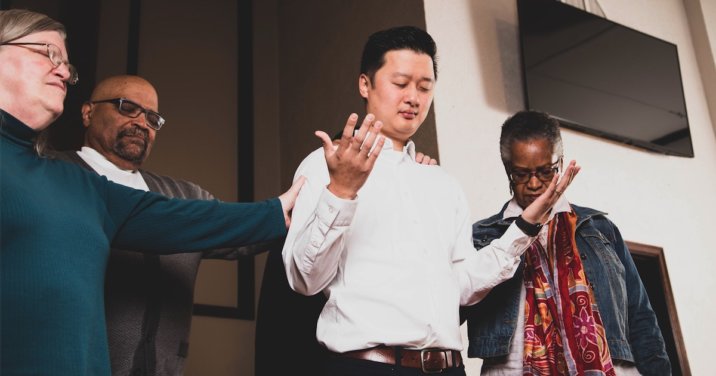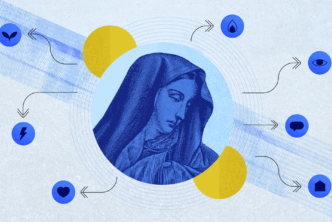These days, many people are talking about unity in diversity. But what does that mean for the body of Christ? What are our biblical models, and how can we learn from them?
In the following excerpt from the excellent Mobile Ed course Ministry in Multiethnic Contexts, Soong-Chan Rah looks at the Bible’s promise of unity in diversity and its ultimate, eschatological fulfillment.
***
The promise of Micah 4
In the OT, we see that the curse of the Tower of Babel—found in Gen 11, where there could not be unity in the midst of diversity—we see that curse is reversed in Micah 4. And Micah 4 is a promise that this will happen. Micah 4 is the expectation that, someday, the curse of the Tower of Babel will be reversed and that God’s people, His people, will be gathered at the mountain of Yahweh.
And we see that this occurs through the person of Jesus Christ. Christ comes, as we know, to tear down the dividing walls of hostility, to bring together into unity what had once been a curse of division and hostility. And we see the fulfillment of the work of Christ on the cross and the power of the resurrection—the power of Christ—at work in Acts 2, where, now, not only do you have the promise of Micah 4 but you have the fulfillment of Micah 4 in Acts 2. So what had once been a dividing wall of hostility [and] what had now been the promise of the reversal now finds its fulfillment in Acts 2.
The community in Acts: unity in diversity through the Spirit
In Acts 2 we see a commitment to form a new Christian community. It is the feast of Pentecost, an OT ritual that affirmed a new covenant or the restatement of the covenant between God and His people.
And within the context of that reaffirming of that covenant between God and His people, we see the Holy Spirit fall upon His people in Acts 2. And instead of [the] division that we saw in Gen 11, we now see a unity. We see many different languages, many different cultures, [and] many different peoples come together and find a unity. In the midst of their diversity we find a unity.
This image in Acts 2 and then in subsequent parts of the book of Acts—in Acts 6, in Acts 15—[enables us to] begin to see this image of what had been promised in Micah 4 come to fulfillment as followers of Jesus unite together even in the midst of their diversity.
In fact, not only are they united in their diversity, [but] they are now able to go into all the corners of the world, and the gospel is unleashed from the contexts of the ancient Near East into Europe, into Asia, into Africa; and we see not only the reverse of the curse of the Tower of Babel but now the going forth of the gospel into all the corners of the world.
Reflections throughout Scripture
And then, from there, we see the writings of Paul and the letters of the Epistles and all of these NT materials pointing toward how we can have unity in the midst of that diversity. And the fulfillment, the ultimate fulfillment, is found in Revelation 7:9: “After this I looked, and there before me was a great multitude that no one could count, from every nation, tribe, people and language, standing before the throne and in front of the Lamb.”
This is the promise of the movement from Genesis 1–11 to Micah 4 to the story of Jesus to Acts 2, 6, and 15 [and] into the writings of the Epistles and in the fulfillment, in Revelation 7:9, that what had once been the dividing walls of hostility—they have now fallen, and every nation, every tribe, [and] every people and language stand before the throne and worship the Lamb of God.
One thing you will notice in this passage is that this gathering is a truly multiethnic gathering. It says that there are different nations, different tribes, different people, and different languages. And in the midst of the diversity of nation, tribe, people, and language, there is a unity before God.
Celebrating diversity while celebrating God
So diversity is not lost. In fact, in some ways, it is celebrated because there is a counting of all the different nations, tribes, people, and languages. But there is now a unity as all these different groups worship before the Lamb of God. This is the great promise of Scripture: that there have been twists and turns; that there have been places where culture has created division, or people have seen culture as divisive, but the promise and trajectory forward is that culture now provides a place of unity—unity within diversity.
So we live in between the time of Acts 2 and Revelation 7. Acts 2 shows that there can be unity in diversity. Revelation 7 shows there can be and will be unity within diversity. We live within that time period of Acts 2 and Revelation 7:9. How can we, as a church, now reflect unity within that diversity—not a sameness, not a watering down, not a hostility between cultures, but a unity within the context where every nation, every tribe, every people, and every language can worship before the throne of God?
***
Learn more from Soong-Chan Rah in his Ministry in Multiethnic Contexts course, or pick up any of his other titles on Logos.
During Asian American Pacific Islander Heritage Month (and all year long!), explore other titles by AAPI authors, such as
- Finding Our Voice: A Vision for Asian North American Preaching by Matthew D. Kim and Daniel L. Wong
- Surprised by the Parables: Growing in Grace through the Stories of Jesus by Michelle Lee Barnewall (recently named a finalist for a 2021 Christian Book Award)
- In Season and Out: Sermons for the Christian Year by David A. deSilva
Related Articles
- Racial Diversity: John Stott on What It Means to Be a Peacemaker
- Are Contextual Theologies Heretical Theologies?
- Shepherding Your Church on Race: 5 Practical Tips
Image courtesy of Faithlife Media.







